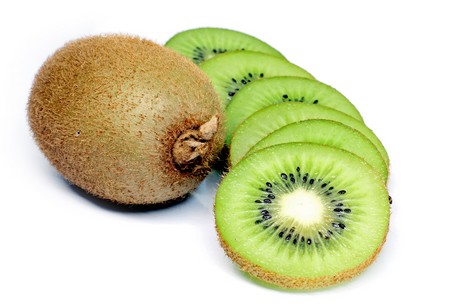 iers will focus much of their exports in the markets that have strong prices and returns as they have had a 55% decrease in production this season because of the severe frost in September last year.
iers will focus much of their exports in the markets that have strong prices and returns as they have had a 55% decrease in production this season because of the severe frost in September last year.According to the latest estimates from the Chilean Kiwi Committee, as there are only about 100 thousand metric tons available, all the global markets will receive less fruit.
Apparently, the U.S. will be a particularly important market at the beginning of the season and Europe should offer better prices when the local stock is depleted.
Meanwhile, Asia is expected to have the best prices for the yellow varieties, as usual, despite the hard competition from New Zealand.
"Exporters are telling us that they will start with the U.S., Russia, Latin America and Asia, as these markets have no volume," said the president of the Kiwi Committee, Carlos Cruzat.
"They won't put pressure on Europe in the early season, because right now the market has local stocks in Italy and France," he said.
"We have to give Europe the opportunity to sell their local product, but after they're done the Chilean kiwi will probably be sold at excellent prices," he added.
According to Cruzat, as Chile's kiwi volumes are half of what they used to be, demand will be high in all markets, so exporters will have to be smart to find the best prices.
He explained the industry wouldn't rush to export, even though they could start distributing it early as the fruit has the correct internal quality and good levels of dry matter and sugars.
So far, Cruzat noted, there are positive signals from U.S. "U.S. Importers say that we could reach the best prices ever, because the volume is very low in the market and the demand is very high," he said.
Cruzat believes that the competition could be rough in Asia because New Zealand is offering less kiwi than in previous years and, most likely, will keep pressure on the markets that offer better returns, such as China, Korea and Japan.
Last year Chile's exports to Korea were affected slightly due to the economy, but, if the economy is strong this year, exports would increase, said Cruzat.
According to Cruzat, New Zealand would probably send fewer kiwis to Europe this year, leaving more room for Chilean supplies.
Cruzat was quick to point out that, even though the markets with the best prices would play a key role this year, there wouldn't be a major change in the landscape of Chile's exports because of pre-existing orders that must be met.
"We still have to maintain our traditional contracts with retailers to ensure a good season. It's not about loyalty, it's about ensuring the longevity of the business," he said.
As the frost generated smaller sizes and some problems with the shape of the fruit, the industry is also trying to export the same, if not a better, quality than normal.
"This is important when markets are paying more," said Cruzat.
In a typical year, Chile exports 50% of its kiwi crops to Europe, 17% to the U.S., depending on how the market is doing, and about 20% to Latin America.
Asia is a strategic market that absorbs 9% per year and has been growing rapidly because consumers are used to eating kiwi.
"Every year, Chile is sending more kiwis to Asia, especially to China, and this is beginning to change our outlook for exports," said Cruzat.
"Five years ago, we sent a lot of kiwi to Hong Kong. Now we are mainly shipping directly to China. Our relationships with retailers are growing and they are demanding more," he explained.







